Content
16 of the best varieties of zucchini for outdoor use
It's hard to imagine a vegetable garden without a vegetable marrow. This vegetable is one of the first to be harvested and appears on tables in the form of various dishes. The ease of growing zucchini, accessibility, early maturity and other characteristics allow, with proper care, to grow these plants of various varieties in open ground, greenhouses and greenhouses in Siberia, the Moscow region and the Leningrad region.
Varietal variety of zucchini
Our grandmothers did not think much about the varietal characteristics of the plants grown and from year to year they collected their seeds from the best fruits. Sometimes a new variety appeared on the site, but its main characteristic was color spectrum fruits: white, green, yellow, etc. with
The arsenal of modern gardeners is much wider and the color scale as a sign has faded into the background. Attention is paid to such characteristics as:
- Ripening terms (early, middle, late);
- Growth type (bush, climbing);
- Pollination features (parthenocarpic or insect pollinated);
- Productivity.
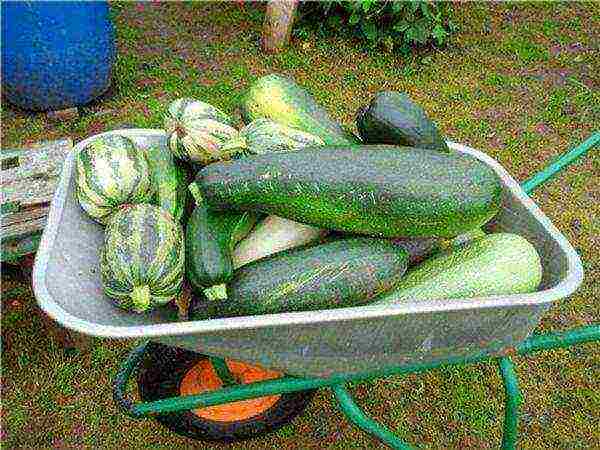
Among the variety of zucchini, special attention should be paid to varieties that have earned the recognition of breeders and are most popular with gardeners. Each group has its own favorites. Someone is convenient due to their ripening time, and someone conquers with their compactness.
The best bush varieties for outdoor cultivation
Most asthenia of the Pumpkin family form long, spreading whipsthat require large areas. At the same time, modern summer residents and gardeners are often limited to 6 acres, on which they want to plant a variety of crops.
The limited space and savings of every meter make planting traditional climbing varieties a real luxury, but bushy ones become a godsend for such sites.
Bush squash you can easy to fit into tight spaces and even plant in a flowerbed among flowers, where large leaves will be an excellent backdrop for other plants.
Aeronaut
Fruits are green, 14-15 cm long, tasty, versatile. They perfectly withstand transportation. Subject to the rules of agricultural technology from 1 sq. m of area can be collected 7-7.5 kg.

White
Ultra-ripe... The first fruits are ready to be harvested within 35-40 days. Fruits of white color, oval, excellent taste, universal purpose The pulp is dense, creamy. Stores well.
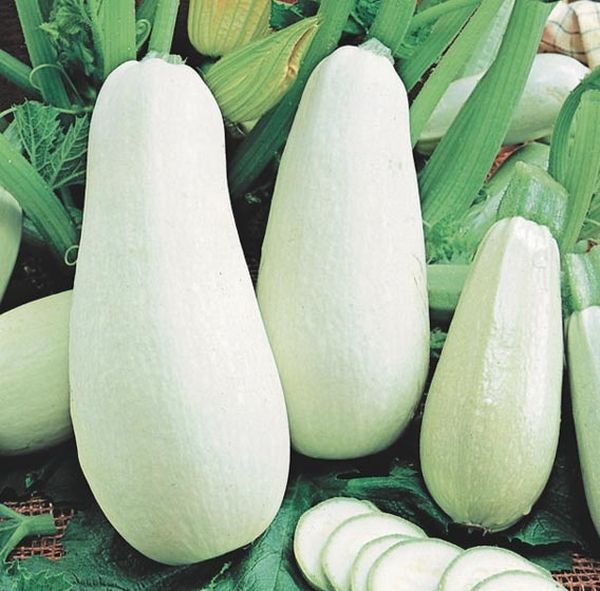
Waterfall
Early ripe hybrid. Fruits weighing up to 500 g, green. The pulp is dense, white. The yield is high. Disease resistance is above average.
Odessa
Early maturing bush type variety. Disease resistance is very high. The fruits are pale green, cylindrical. The pulp is pinkish yellow or light yellow. Suitable for canning.
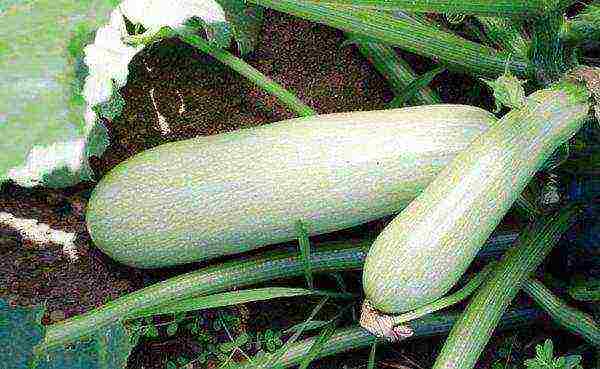
Best self-pollinated parthenocarpic species
Zucchini forms female and male flowers. In most cases, pollination and fruit setting occurs with the help of insectsthat carry pollen.However, when grown in greenhouses, especially in winter, cross-pollination is problematic.
Kavili
Early ripening and high yields make the Cavili hybrid one of the best.
Fruits are light green, up to 22 cm long. Fruiting is abundant and long-lasting. The ripening period is 1.5 months, and the active setting of new fruits takes place within 2 months in any conditions, even without any participation of pollinating insects. During this time, from 1 sq. m manage to collect about 9 kg... The pulp is tender, juicy, whitish.
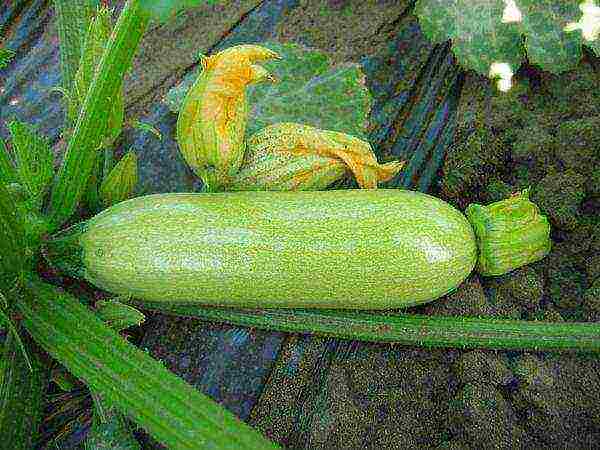
Jellyfish
Super early hybrid. Ideal for early production under cover films. Withstands large temperature drops.
Ripening period 35 days. The fruits are light green with a delicate skin. The pulp is dense, the seed chamber is miniature. Fruit weight can reach 800 g, with a length of 25 cm.
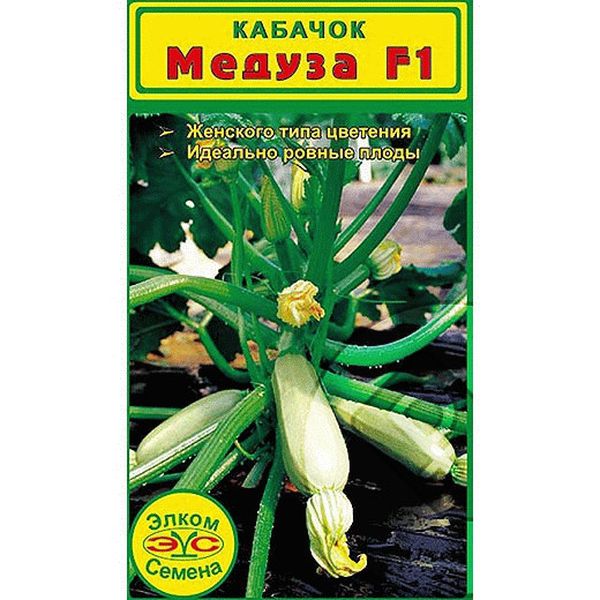
Parthenon
A Dutch breeding hybrid, very compact and productive. For 1 sq. m you can place 3-4 bushes and collect up to 15 kg fruits. Good insect-free fruit set and early ripening make this variety an excellent candidate for greenhouse planting.
The fruits of the variety are dark green, cylindrical with light green dense, juicy and tasty pulp. It can be used not only for canning and preparing various dishes, but also eaten raw. Zucchini fruiting period very long and can stretch until September.

Early varieties
Zucchini varieties of early ripening are of particular value, because it is they who most often become the first fresh vegetables of the new summer season.
Iskander
An early ripe parthenocarpic hybrid developed by Dutch breeders. Ripening period 40-45 days.
When planting 4 plants per 1 sq. m yield is 15 Kg... Iskander fruits are light green, up to 20 cm long, with a thin delicate skin. The pulp is tender, juicy, creamy or white.

Tsukesha
The ripening period of the Tsukesha variety is 41-50 days. The plant is characterized by large dark green leaves with gray spots. These are varietal features of color and should not be confused with a disease.
Fruits up to 40 cm long and weighing up to 900 g. Fruiting continues until frost. Fruit well stored and transported... The pulp is juicy, very tasty.
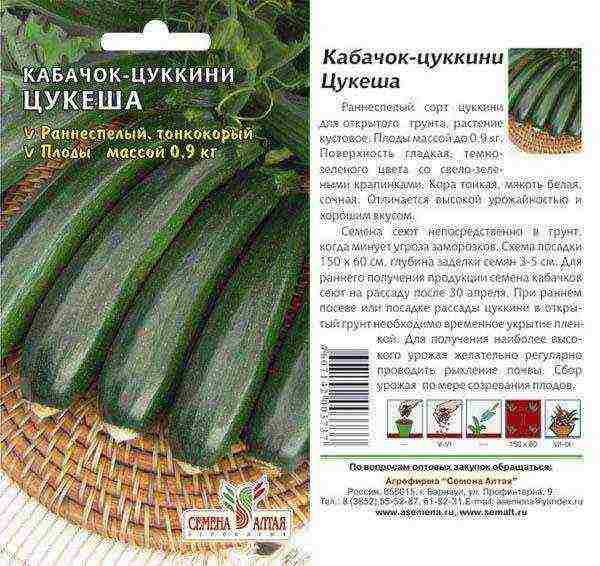
Ball
The main feature of the variety is green globular fruit covered with light dots that look like a ball. The pulp tastes excellent.
Ripening period for round squash is 50-55 days. The plant is compact, bushy with strongly dissected leaves.

Aeronaut
This variety has already been mentioned as a popular bush squash, but the early ripening period is another plus in the piggy bank of positive characteristics. Ripening period 42-45 days.
Medium ripening
Gribovsky
The widely known white-fruited variety Gribovsky. Ripening period is not less than 46 days, depending on the region of cultivation. Plant forms long lashes.
Fruits up to 20 cm in size, white. The skin is hard, the flesh is tasty, white or yellowish. Yield 8.5KG from 1 sq. m.
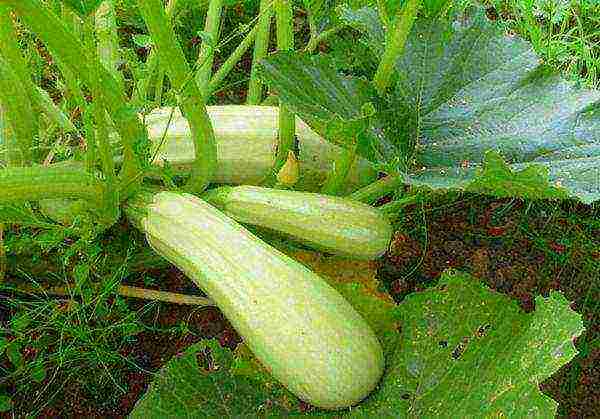
Zolotinka
Ripening period 50 days. Bush type of growth. The color of the fruit is fully consistent with the name.

Black handsome
Bush grade. Ripens in 45 days. Fruits are very dark green in color, close to black. The peel is thin, the flesh is greenish, with a delicate taste.
The fruits are versatile and suitable for all possible uses. At the same time, 4-5 fruits can be tied on a bush.
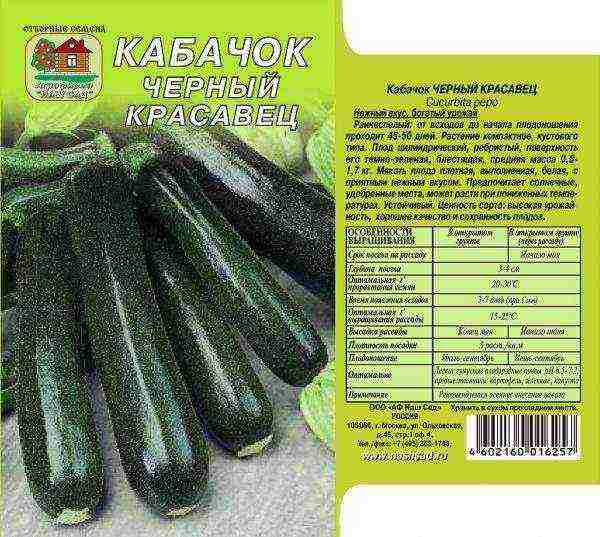
Late zucchini
Spaghetti
Young zucchini Spaghetti tastes no different from the usual varieties, but after full ripening, the flesh of the zucchini stratifies into fibers and it turns out a peculiar vegetable spaghettiwhich has many fans. Outwardly, ripe fruits resemble small melons in shape and color.
The only problem - late ripening, which in regions with a short summer does not always allow waiting for "macaroni".
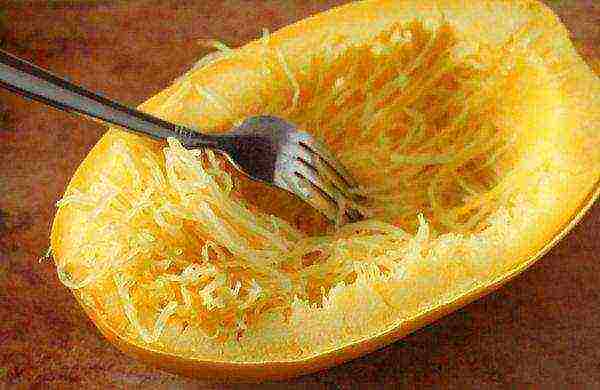
Lagenaria (Calabaza)
This type of pumpkin is also called Vietnamese zucchini... Due to the long ripening period and exoticism, lagenaria cannot be called a frequent visitor to vegetable gardens. The shape of the fruit varies.
When young, they are used as food in the same way as pumpkin or vegetable marrow. In a ripe state, the walls and pulp dry out and a cavity forms inside.
Traditionally, this plant was used by some peoples for the manufacture of vessels.

The variety of zucchini allows you to choose the right variety not only for certain growing conditions, but also for aesthetic and taste reasons.
With the right combination of hybrids, you can get a good harvest even from a small area and prolong the fruiting period. And some exotic varieties can help diversify traditional culinary dishes and grow craft materials.


